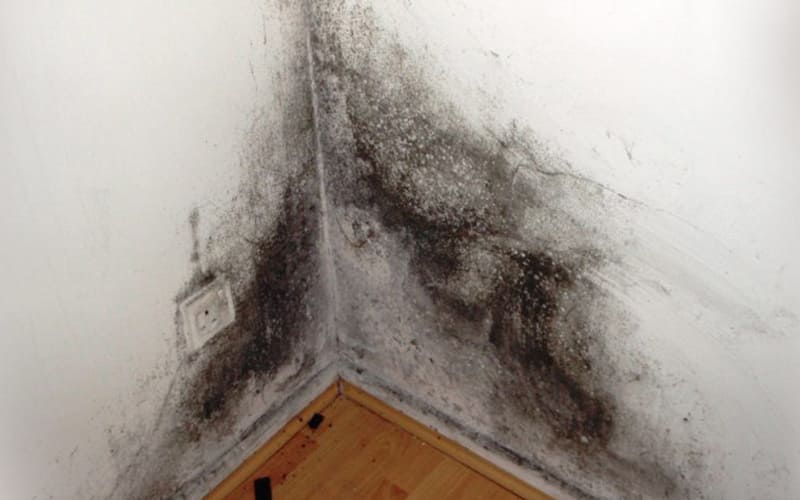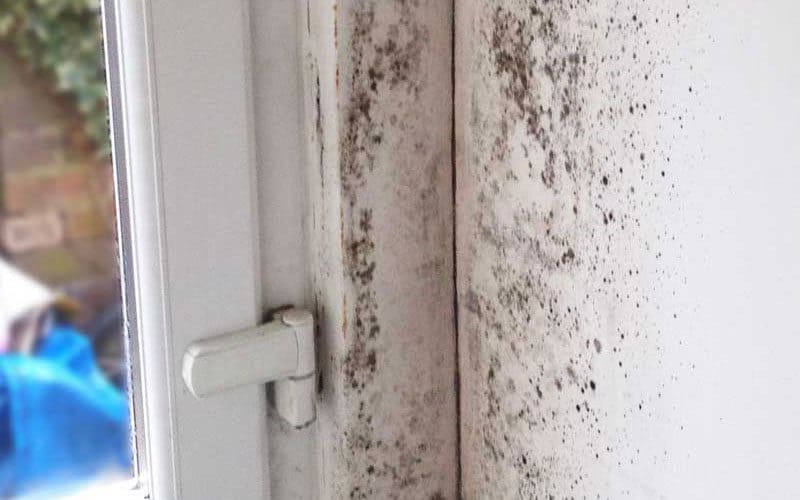Damp problems?
SmartDry are specialists in identifying and providing solutions to damp problems in the home with many years of experience and expertise.
SmartDry has been the specialist
in damp solutions since 2013
100% damp-free warranty.
We can solve your problem!
Sustainable solution: better
for your health and home
Do you suffer from damp problems in your home?
Do you have a damp problem in your home? Then contact SmartDry and let us provide you with a free, no obligation survey of your home in which our surveyor will comprehensively survey the property and identify what the issues are and how we can solve them for you. If we recommend a solution to the issues, we will provide you a quote at the conclusion of the survey – this usually takes about 1 hour. So irrespective of whether you decide to accept our quote you will have factual information which allows you to make a decision regarding how and who you want to deal with the damp. If you engage us, we do provide you with a lifetime guarantee. Outstanding customer service is standard.
Damp Causations
Rising Damp – Causation – A failed or ineffective Damp Proof Course
Penetrating Damp – Causation – Water penetrating through the wall (A defect in the property)
Condensation – Causation – Imbalance of Humidity, Heating, Ventilation (also links with Rising and penetrating damp)


Rising damp
To give this its correct term its Hydrostatic damp, this is the ground water table being high – so proximity to waterways and the amount of rainfall being experienced affects the ground water table. When the water table is high, the water in the ground will be pushing up against the foundation of your property under pressure, a failed or ineffective damp proof course will allow the water to be forced up into the mortar surrounding the brickwork – the more pressure and the ease the existing DPC allows water through will affect the visual appearance you will see on your walls. When that moisture makes contact with the internal plaster it acts like a wick and via capillary action it will draw water up the wall usually producing a tide mark on the wall – It looks like a wavy line running horizontally across the wall above the Skirting board – this can reach just under 1 metre high. If you have exceptionally thick outer walls then that damp can rise to around 1.2 metres high and the sheer weight of the water in the wall is held in check by the effects of gravity – it cant go any higher.
Standard bricks and engineering bricks can hold just over 7% water by weight to become saturated, the mortar can hold around 20% water to achieve saturation, bricks are completely surrounded by a bed of mortar as this binds the bricks together – so its obvious that the main route of water rising up the wall is via the mortar and that’s important to understand when seeking a solution to the problem.
The other route to rising damp is a high ground level on the outside of the building, gardens that have been raised for example, perhaps a new driveway, a blocked soak away, French Drains blocked or hard ground/tarmac, Patio Decking or paving slabs being inclined towards the walls so rainwater puddles against the wall – and this creates dampness to soak into the wall – technically this is penetrating damp but the effect inside resembles rising damp as it allows the walls to be salt contaminated in exactly the same way and creates a very similar visual image.
Many older properties were built directly on the ground and had no DPC installed at all, some properties were built on a slate bed as a DPC but slate was very expensive and usually reserved for very exclusive homes – though there are exceptions of course
Penetrating Damp
This is a defect within the property and can be created by a range of defects such as:
- Spalled Brickwork (The face of the bricks detached from the brick itself or crumbling bricks)
- Damaged Mortar (Needs repointing)
- High Ground Levels (as explained above)
- Failed Cavity Wall insulation (The insulation has become wet and retains that dampness)
- Porous Bricks (Some bricks do become porous as they age and absorb water usually caused by incomplete firing in the kiln when manufactured)
- Cold Bridges (Rubble within a cavity wall bridging the cavity and allowing moisture transfer)
- Roof faults
- Blocked or leaking/overflowing Guttering
- Damaged Render or render at the end of its life
- Silicon Window seals between Frame and brickwork (Silicon shrinks around 6 years of age which allows driving rain into the wall between the frame and the brickwork)
- Cables running down walls and feeding directly in via a drilled hole (Cables should drop below the point of entry and looped back up – rainwater then drips of the end of the loop)
- Chimneys stacks not having a cap fitted
Condensation
This can affect any home irrespective of age or construction, condensation is a lifestyle issue – its created by people primarily and the way they live, however once understood how and what is creating the condensation it can be easily managed through lifestyle changes or condensation control systems.
Condensation is created when the humidity in the air exceeds the maximum value the air can hold and the air deposits that moisture as water droplets on hard and soft surfaces, initially its invisible but as time passes the formation of mould will become visible and mould has health implications. (please read our “High Humidity in the home” page for a full explanation.
Condensation can be regulated and negated by simply balancing the humidity generation, the temperature you maintain the house at and the degree of ventilation to dilute humidity. The purchase of a humidity meter is beneficial to all homes because humidity can be felt but not visually seen – a meter will keep you informed of what’s happening and allow you to intervein and correct before condensation causes issues
Other Signs of Damp
House never feels warm and energy bills excessively high – Wet and damp walls are always much colder than a dry wall therefore when you switch the heating on those cold walls will sap the heat produced so the heating takes a longer time to get the rooms to a comfortable temperature – and a lot more energy used to achieve it- Secondly, when the room is up to temperature those wet walls will now be evaporating moisture into the room – as humidity, when the heating goes off overnight this increases the opportunity for even more condensation, mould and wetter walls – it’s a cycle you have to break.
Doors difficult to open or close – Wood will absorb humidity, it makes the wood swell and changes well fitting doors into doors that stick when you try to open or close them, likewise wooden drawers will not run smoothly either
Damp Musty aromas – Upon entering the house after a day out there will be a strong damp smell – and this gets worse as time passes
Visual damp spots, peeling Wallpaper, flaking paint and mould formations – Damp spots will look like a speckled pattern on the wall or wallpaper, they usually develop initially in areas where there is limited airflow – so in corners where two walls meet – just above the skirting board or high up close to the ceiling, behind curtains, behind furniture and inside cupboards if the rear of the cupboard is the wall itself
Plaster detaching from the wall – This is known as “Blown Plaster” It is caused by constant wetting and drying of the plaster so it goes soft (try pressing your finger nail into the plaster – if it leaves a mark then the plaster is soft) The cycles of wetting and drying damages the adhesive quality of the plaster to the substrate (the brickwork of the wall)You can test this yourself by tapping on the wall with your knuckles – just like you would knock on someone’s door, Solid plaster makes a dull thud as you knock it – blown plaster will sound a little like a drum – the sound will change between adhered and blown areas.
Feeling unwell or uncomfortable – The body regulates its temperature by respiration and perspiration – breathing and sweating, and is particularly sensitive to high humidity – a common trait of damp within a house. Mould spores are not usually a significant risk to people but those with compromised breathing conditions – like Asthma, COPD, allergies to dust mites, silverfish are more at risk.
Feeling lethargic, too hot a little sick? all symptoms of high humidity, High humidity does not make the room warmer but tricks the body into thinking it is – so the body protects itself and increases heart rate to move more blood around to cool the body, respiration increases which can lead to –
- Dehydration
- Fatigue
- Muscle cramps
- Heat exhaustion
- Fainting
- Heat stroke
SmartDry solves your damp problems in your home forever.
If you suffer damp problems in your home, it is not always easy to determine the cause of the damp, and the location of the damp may have no obvious reason for manifestation which results in it being problematic to identify, That’s where SmartDry excels as a specialist in damp control and all our solutions are completed in an environmentally friendly way, No disruption inside the home when installation takes place as we work from the outside of the property – extracting the damp from the walls with our ingenious DryBrick system, no harmful chemicals used, a lifetime guarantee and installation by only in house trained staff.
Our DryBricks are designed and produced to exacting standards and patented – so you cannot purchase DryBricks from any other source, we don’t sell our DryBricks for self-install either as installation positioning is critical for our system to be fully effective in combating damp forever.
Plan a free damp assessment
Feel free to contact us for a free damp assessment or advice from our moisture expert.


